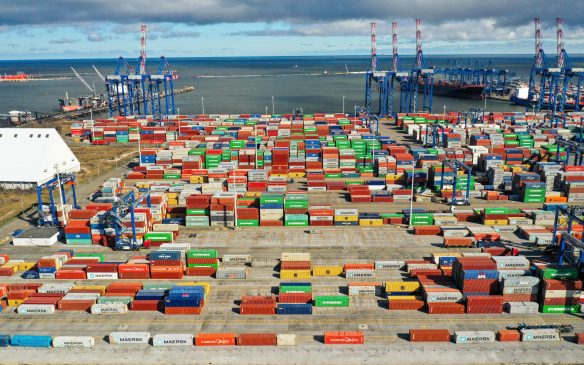Before it can sail into the wide world, all grain delivered to the Port of Gdańsk first undergoes quality assessment.
In the first half of the current year, nearly 1.4 million tonnes of grain (predominantly corn) were exported from the Port of Gdańsk, a 52% increase on the corresponding period of the previous year.
Due to increases in grain transports to the port, two additional areas have been equipped with J.S. Hamilton samplers. Lorry drivers awaiting grain quality inspection can bring their cargo to the waiting area on Ku Ujściu and Budowniczych Portu Północnego, where J.S. Hamilton laboratory staff will be waiting for them.
Grain samples are collected in a total of four locations around the Port of Gdańsk – at lorry parking spots on Budowniczych Portu Północnego, Ku Ujściu, Śnieżna and Załogowa. This is our response to increased grain traffic at the port.
‘Our staff are able to inspect more vehicles thanks to shorter queue times,’ says Łukasz Malinowski, president of the Board of the Port of Gdańsk.
The Port of Gdańsk is the only port equipped with indoor samplers. This makes it possible to inspect grain for its quality, even in inclement weather.
How does a grain sampler work? The device automatically collects grain samples from open lorry trailers. A probe is inserted into the cargo, and a sample is placed in an inner chamber, where suction transports it to a container via a flexible hose. The samples are then transported to a laboratory. Research samples can be collected from any part of the trailer and at any depth, ensuring accurate results.





